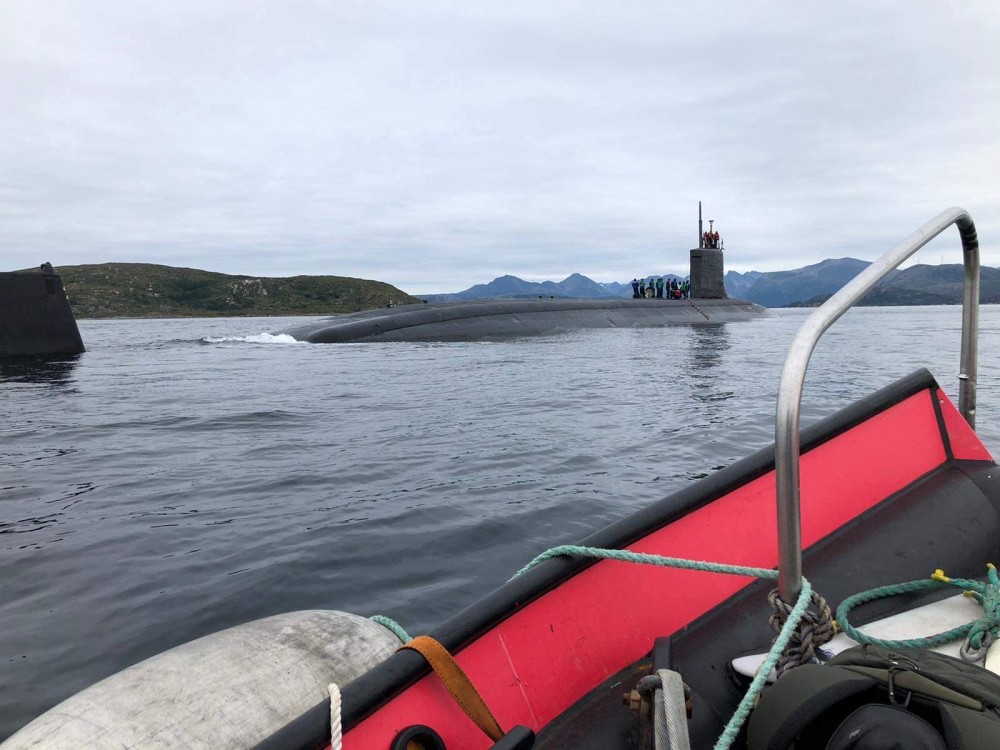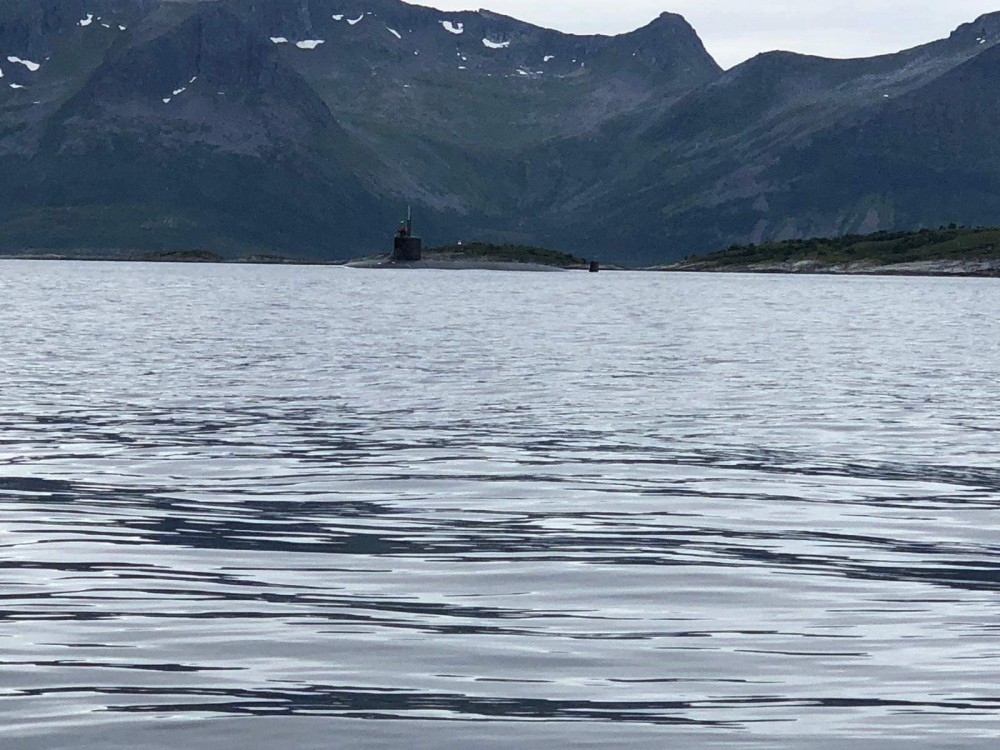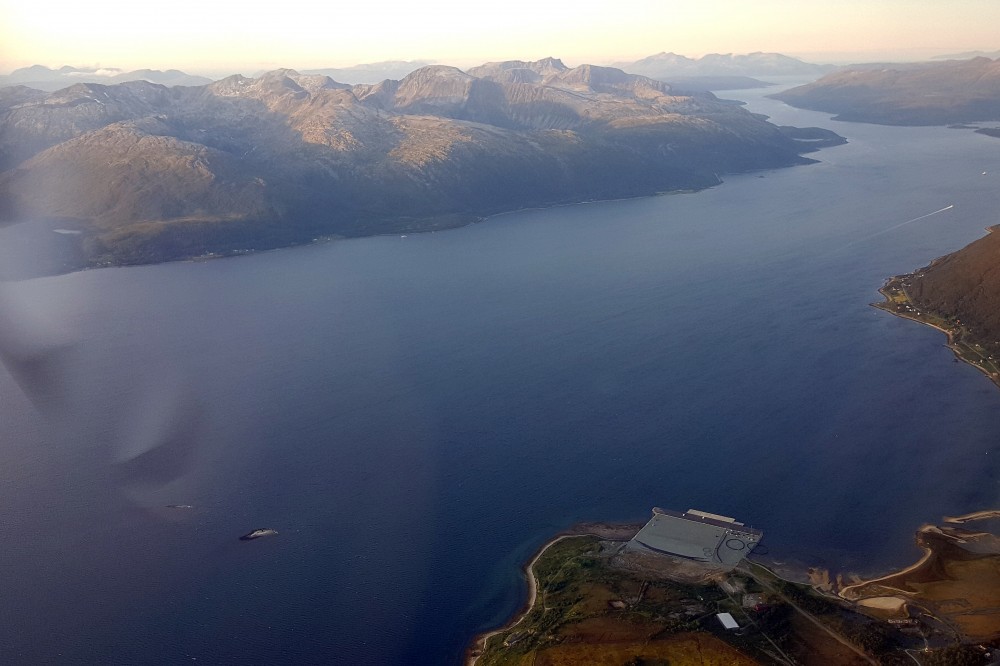U.S. Navy's most advanced attack submarine surfaced outside Tromsø
The USS Seawolf conducted a brief stop in the fjord near Tromsø on August 21 for personnel change before sailing out to waters inside the Arctic Circle.
August 25, 2020
It is no secret that U.S navy submarines are patrolling the waters where Russia’s submarine fleet based on the Kola Peninsula sails out to the Barents Sea and Norwegian Sea. But it is not frequently announced which submarines are in the area and when they surface.
At a cost of nearly $3 billion per vessel, just three submarines of the Seawolf-class were built out of the originally planned fleet of 29. Too expensive, but also the most advanced and powerful attack sub in the U.S. Navy.
USS Seawolf is based at Bangor naval base on the west coast of the United States and normally sails the Pacific. But on Friday the nuclear-powered submarine suddenly came to surface outside Tromsø in northern Norway.

Here, the narrow waters under high mountains along the coast make a perfect shield for a submarine to surface for fast crew change and receiving supplies from shore with assistance of Norwegian Coast Guard or Navy ships. Tromsø has a larger airport and well-developed infrastructure.
It is only a few hours voyage to the important Bear Gap where Russian submarines dive into the deeper Norwegian Sea. This area is important for NATO, trying to keep track of potential enemy subs in the line between the North Cape via the Bear Island to the southern tip of Spitsbergen. From the rather shallow Barents Sea to the deeper Norwegian Sea in the North-Atlantic where submarines are more difficult to track.
The USS Seawolf was designed in the late Cold War days to dive deeper than others and aimed at counter ballistic missile subs sailing out from the Kola Peninsula. The submarine is armed with eight torpedo tubes and can hold up to 50 weapons in its torpedo room, including the Tomahawk cruise missile.
The 108 meters (353 ft) long vessel is powered by a single nuclear reactor delivering 45,000 horse powers (34 MW). She has a crew of 14 officers; 126 enlisted.
Now, the USS Seawolf is deployed to the U.S. 6th Fleet which is in charge of American naval operations in Europe and Africa.
Announcing the surfacing outside Tromsø, Commander of the Submarine Forces, Vice-Admiral Daryl Caudle said USS Seawolf demonstrates the global reach of the undersea forces and its unique readiness to execute worldwide and unrivaled readiness.
“Our undersea warriors are the best in the world in submarine warfare and are equipped with unmatched capabilities designed to enhance our Navy and multiply the Joint Force’s effectiveness in competition and conflict,” Caudle said in the statement.

Simultaneously as the fast attack submarine surfaced near Tromsø, six U.S. B-52 long-ranged bombers came south from the Arctic in the airspace outside Tromsø en route from North Dakota to England. Norwegian F-16s from Bodø airbase were flying in formation with the huge American bombers across the Norwegian Sea.
The Barents Observer has previously reported about the increased presence of American submarines in Norwegian waters, in 2018 said to be inshore 3 to 4 times monthly.
“The majority were in the north, three times more,” Navy Captain Per-Thomas Bøe with the Ministry of Defense in Oslo said.
Lacks northern navy base
Norway does not have any naval bases suitable for nuclear-powered submarines in the north. As Haakonsvern near Bergen on the southwest coast is too far away from the important northern waters, the Norwegian military is currently planning for an agreement with Tromsø municipality for using the civilian Tønsnes port for allied nuclear submarines.
Until the arrangments are in place with harbor facilities, nuclear submarines will continue to surface in the fjords and be served by Norwegian military ships.

Moscow upset
Russia has voiced concerns about NATO submarines making port calls to Tromsø.
“There are more and more examples of Norway’s active participation in the implementation of NATO’s plans to increase the Alliance’s presence in the Arctic region,” Foreign Ministry spokeswoman Maria Zakharova said, as reported by The Barents Observer.
Nuclear emergency preparedness
The Norwegian Radiation and Nuclear Safety Authority’s emergency preparedness unit in Tromsø is informed about each arrival of nuclear-powered vessels, including the USS Seawolf.
Head of Section High North, Inger Margrethe Eikelmann, writes in an e-mail to The Barents Observer her unit is always prepared to monitor such port calls.
“We are working to further develop the measurement system both with drones, new radnet [radiation monitoring] stations, air vacuum cleaners, and handheld instruments,” Eikelmann tells.
She adds: “We are also working to improve the emergency preparedness systems and environmental monitoring at the ports of call.”




Ingen kommentarer:
Legg inn en kommentar
Merk: Bare medlemmer av denne bloggen kan legge inn en kommentar.